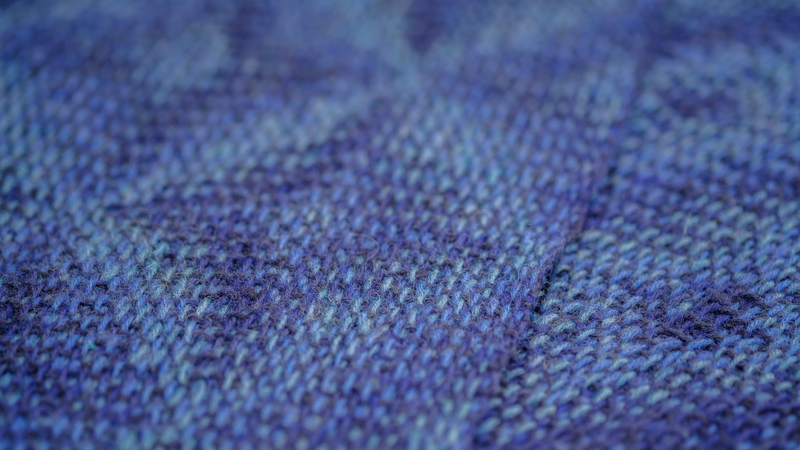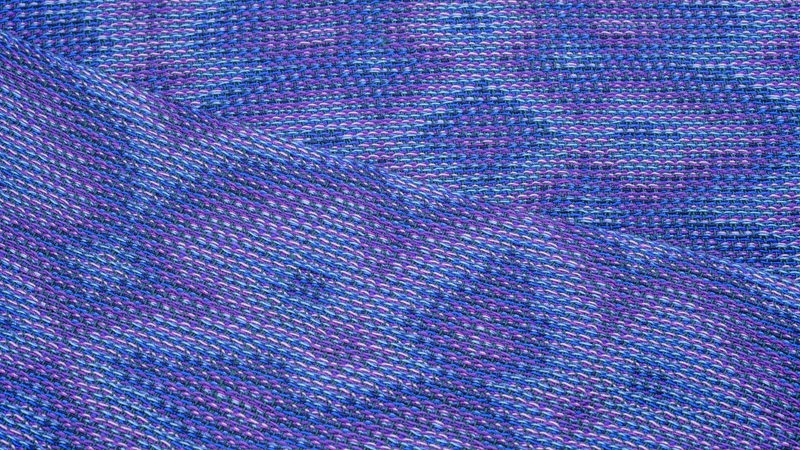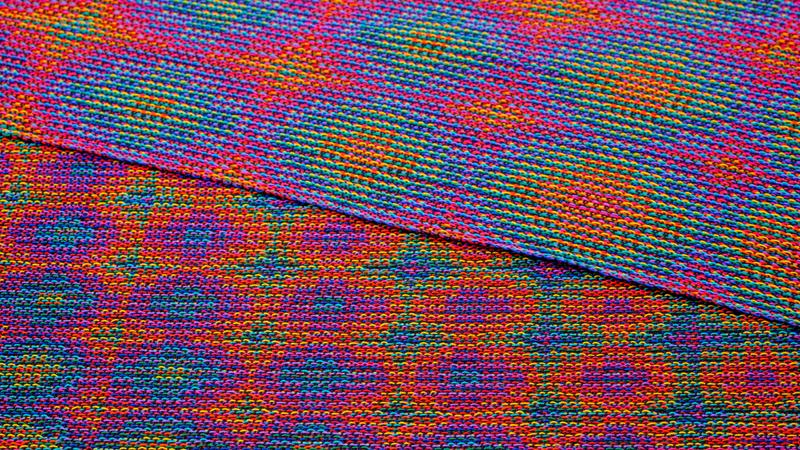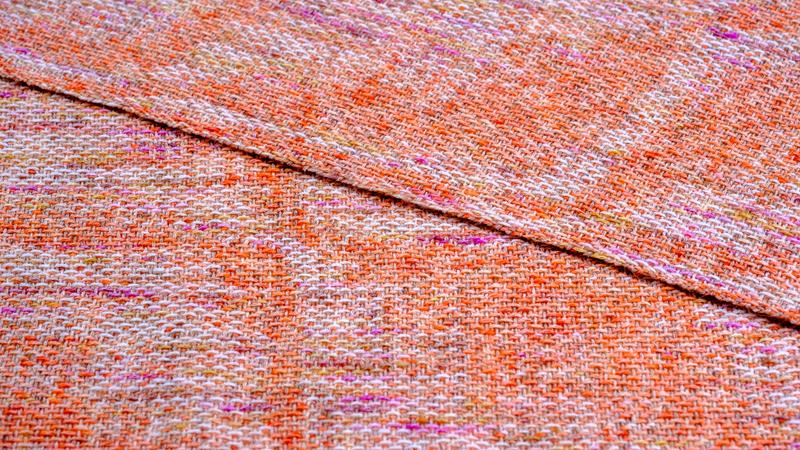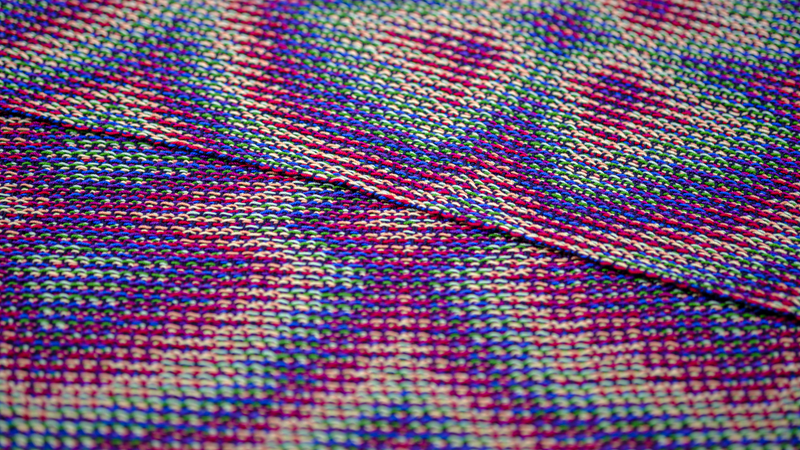What do you do when you want to make a shawl in shades of blue? There are many possible routes to take, but I decided on revisiting monochrome Corris. It is a great way to achieve a subtle interplay of colors.
A Woven World – cotton
by Barbara Goudsmit
Warps with multiple parallel lines have drawn me to using rainbow colors. It took a while for me to appreciate that dialing down the color volume gives equally interesting results. For one of my latest shawls, I stuck to a warp of blues and purples.
My weaving life has been revolving around echoes for months now. With any chosen combination of 8 colors in mind, one could go with either the echo-4 or echo-8 technique to make a wonderful project. I decided to do a fun experiment to compare cloths yielded by these techniques.
Last spring, I made a shawl in Turned Taquete based on the Fibonacci sequence. When my mother saw this shawl, she said she would like one in a different color combination. I was happy to comply, but made one additional little change besides the color choice.
Working with 8 warp colors in echo-4 and echo-8 designs gives room for ample color combination experiments. After I tried out a bright colored rainbow, I wondered what result a combination of light, bright and dark colors would bring. The color combination I came up with looked rather curious as a mere warp, but turned out to be a wonderful palette once intersected with weft threads.
